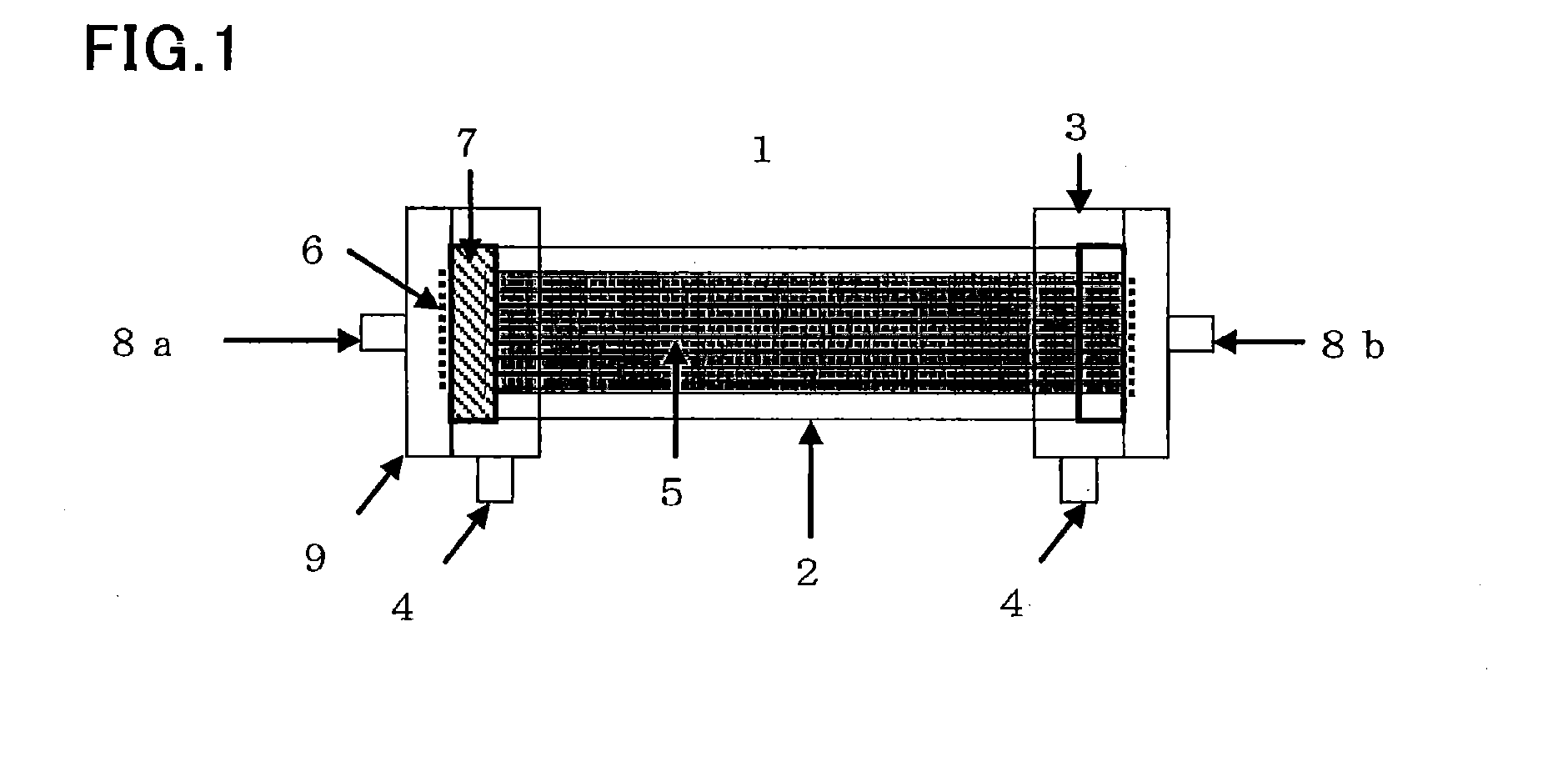Method for producing cell concentrate
a cell concentrate and cell technology, applied in the field of cell concentrate, can solve the problems of clogging of pores with proteins or cells, and affecting cell survival, and achieve the effect of preventing clogging of pores, reducing clogging of hollow fibers with cells, and high efficiency
- Summary
- Abstract
- Description
- Claims
- Application Information
AI Technical Summary
Benefits of technology
Problems solved by technology
Method used
Image
Examples
example 1
[0055]An experiment of concentrating cells was performed using hollow fiber separation membranes made of polyethersulfone [model No.: M2-M02E-300-F1N (Spectrum Laboratories), filtration area: 0.31 m2, pore size: 0.2 μm, cross-sectional area: 1.737 cm2]. The average pore size of the inner pores of the hollow fiber separation membranes was found to be 5.57 μm from a 2000×SEM image. Cultured Jurkat cells were suspended in RPMI 1640 medium (10% FBS). A 1500 mL portion of this cell suspension (concentration: approximately 2.0×106 cells / mL) was sampled, and the medium was filtered. The sample was loaded at a flow rate of 200 mL / min to provide an initial filtrate flow rate of 181 mL / m2 / min. The cell recovery rate was found to be 84%, and the viability ratio was found to be 97%.
example 2
[0056]The same separation membranes as those used in Example 1 were used. A sample was loaded at a flow rate of 555 mL / min to provide an initial filtrate flow rate of 425 mL / m2 / min. The cell recovery rate was found to be 81%, and the viability ratio was found to be 95%.
example 3
[0057]The same separation membranes as those used in Example 1 were used. A sample was loaded at a flow rate of 650 mL / min to provide an initial filtrate flow rate of 250 mL / m2 / min. The cell recovery rate was found to be 92%, and the viability ratio was found to be 99%.
PUM
| Property | Measurement | Unit |
|---|---|---|
| Flow rate | aaaaa | aaaaa |
| Flow rate | aaaaa | aaaaa |
| Length | aaaaa | aaaaa |
Abstract
Description
Claims
Application Information
 Login to View More
Login to View More - R&D
- Intellectual Property
- Life Sciences
- Materials
- Tech Scout
- Unparalleled Data Quality
- Higher Quality Content
- 60% Fewer Hallucinations
Browse by: Latest US Patents, China's latest patents, Technical Efficacy Thesaurus, Application Domain, Technology Topic, Popular Technical Reports.
© 2025 PatSnap. All rights reserved.Legal|Privacy policy|Modern Slavery Act Transparency Statement|Sitemap|About US| Contact US: help@patsnap.com

